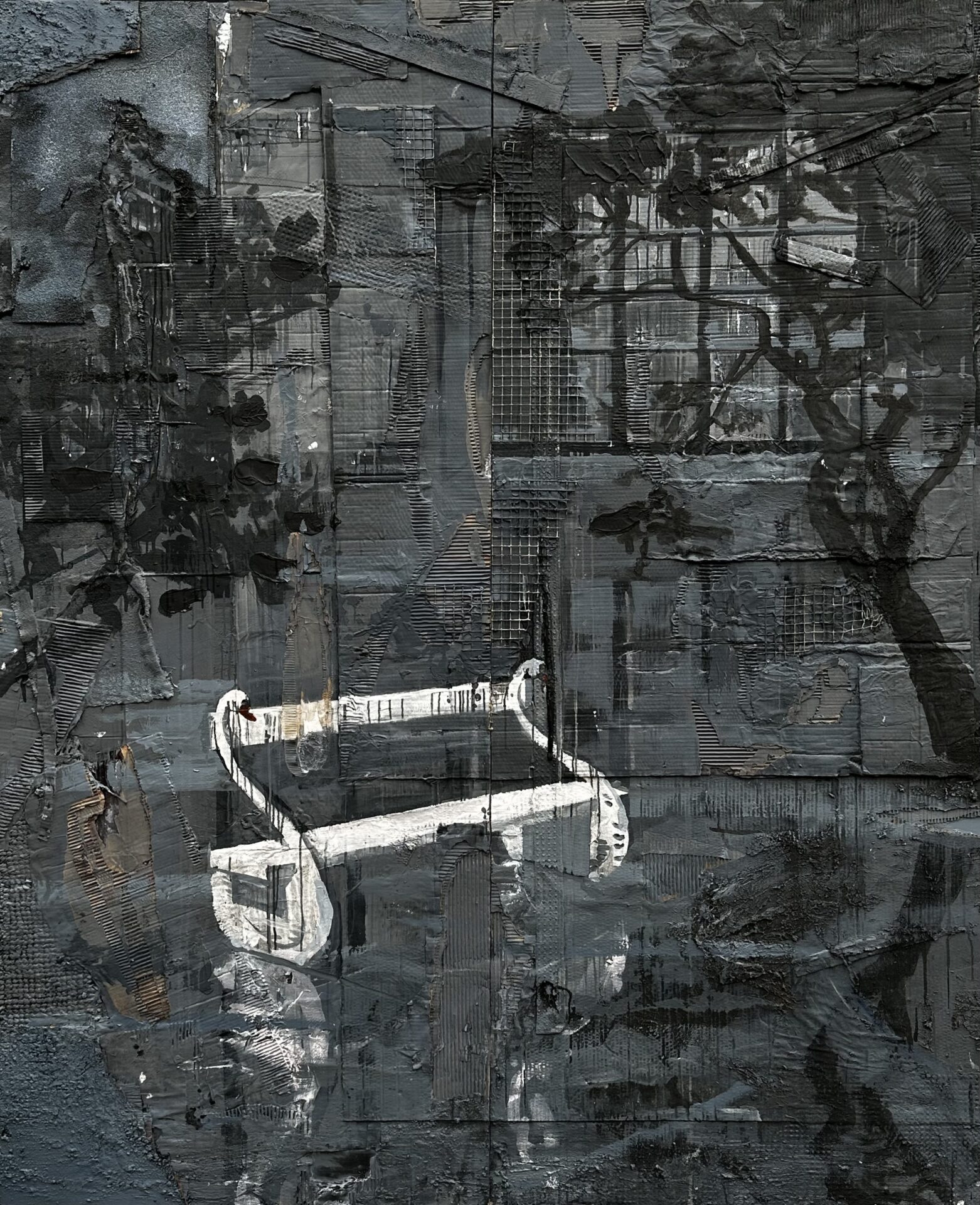Working from a studio that spills into his garden, Aldo van den Broek’s paintings are shaped by the natural forces of rain, sun, soil, and time. His practice is an evolving dialogue between chaos and control, decay and rebirth. Using found materials, discarded objects, and moments of chance, Aldo creates layered works that feel raw, intimate, and alive — fragments of both his own story reflected upon our society’s currents. In this conversation, he speaks about his unconventional approach to making art, the emotional landscapes embedded in his work, and why he believes beauty often lies in the places we overlook.
What drives your choice of materials?
I work with what’s already failed. Cardboard, rusted metal, wood, cigarette butts – they’ve already lived through something. I’m not drawn to untouched surfaces. I want materials that have been used, discarded, changed by time. They carry tension. You can feel that in the structure. I don’t use them to symbolize ruin. They’re just honest. They resist being flattened into images, and they push me around. Agency going back and forth between me painting and the collection of materials that becomes an object. Like life, it’s the challenge and the dialogue that shapes its soul.
How does your process typically unfold?
Slowly. Nothing is planned. I collect fragments, live with them, rearrange them until something shifts. I leave pieces out in the rain, let them warp or tear. Some sit in the studio for years before I touch them again. I keep multiple works open at once. They’re not compositions – they’re built conditions. A finished work doesn’t feel resolved. It just holds its weight. If it looks finished, I’ve gone too far. Then I put it in the garden for a while and let it breathe. A good piece should feel like it could still fall apart.
How do you approach human presence in your work?
Indirectly. My focus isn’t in individual psychology. I’m more drawn to what happens when identity is shaped by a system – institutions, architecture, roles. Sometimes a face appears, or a figure. But mostly they aren’t portraits. They’re functions. Judge, father, patient, soldier – positions people inhabit. I want to know what’s left when those positions collapse. The courtroom, the psych ward, the family home – same architecture, different uniforms.

